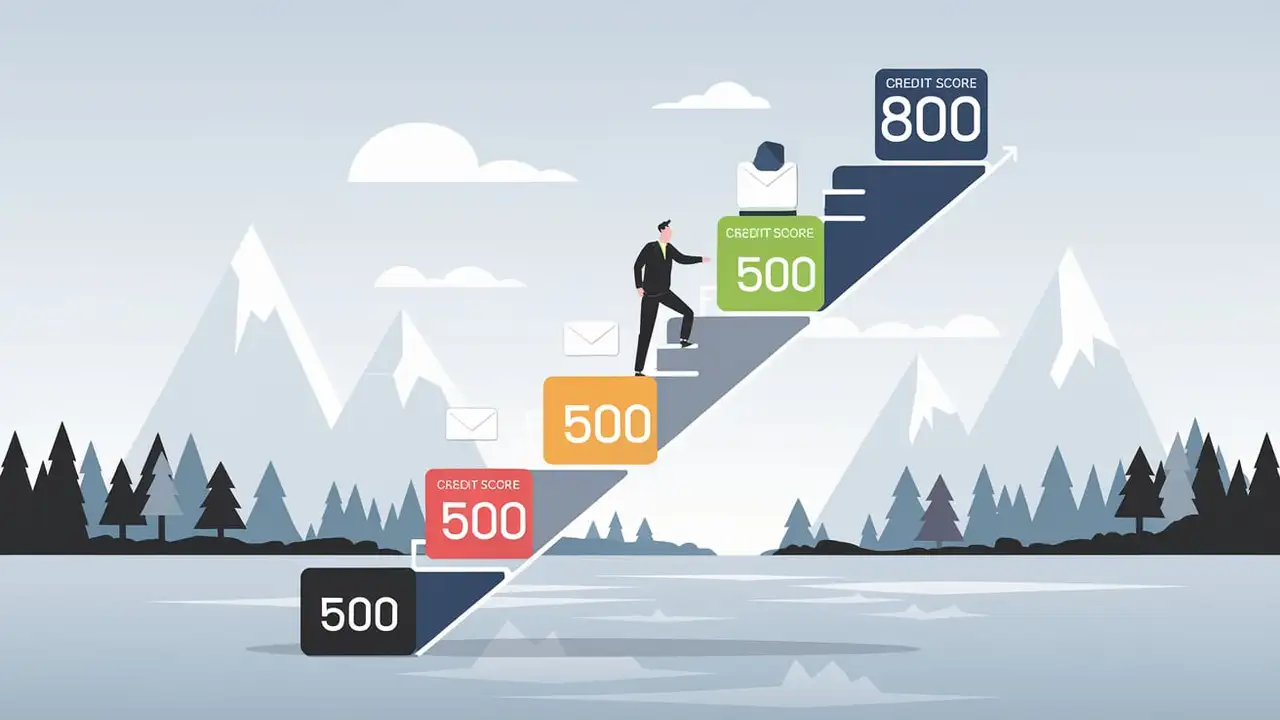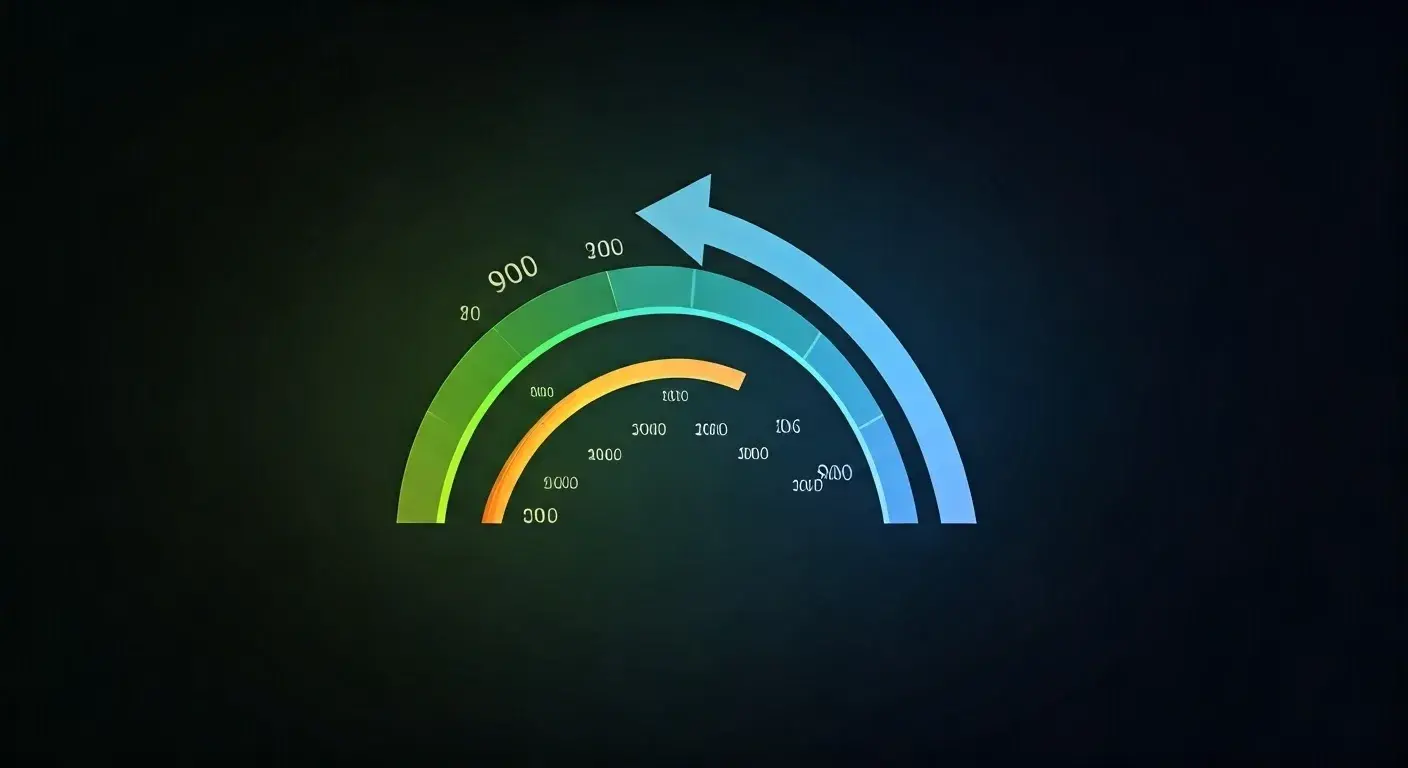-
Posted on: 05 Aug 2024

-
Achieving a credit score of 800 or higher is a significant accomplishment. It signifies excellent creditworthiness and unlocks access to the best interest rates and financial opportunities. But how difficult is it to climb from a "good" credit score of 700 to that coveted "excellent" range? This comprehensive guide explores the challenges, timelines, and strategies involved in making that leap.
 Image depicting a credit score meter increasing. (Replace with actual image)
Image depicting a credit score meter increasing. (Replace with actual image)
Understanding the Credit Score Landscape
Before diving into the specifics of moving from 700 to 800, let's briefly review the credit score ranges and their implications:
- Poor (300-579): Significant credit challenges, difficulty obtaining loans.
- Fair (580-669): Below average, may face higher interest rates.
- Good (670-739): Generally considered acceptable, decent interest rates.
- Very Good (740-799): Above average, good interest rates, likely approved for loans.
- Excellent (800-850): Exceptional creditworthiness, best interest rates, maximum approval odds.
A 700 credit score places you in the "good" range. While not bad, it's not ideal. An 800+ score, on the other hand, offers significant advantages in terms of loan approvals, interest rates, and overall financial flexibility.
The Challenges of Reaching 800
Moving from a 700 to an 800 credit score isn't a simple overnight process. It requires diligent effort, responsible financial habits, and, in some cases, a bit of patience. Here are some key challenges:
1. The Law of Diminishing Returns
Credit scoring models are often structured so that the initial credit improvements are relatively easier to achieve than the final push towards the highest tiers. Think of it like climbing a mountain: the base is often gentler than the steep incline near the summit. Improving from a 550 to a 650 might happen relatively quickly with consistent, positive actions. However, jumping from 750 to 800 requires even more meticulous attention to detail and may take significantly longer.
2. Perfecting Credit Utilization
Credit utilization, the amount of credit you're using compared to your total available credit, is a crucial factor. Ideally, you want to keep your credit utilization below 30%, and ideally below 10%. While you might already be managing this well with a 700 score, reaching 800 requires near-perfect utilization. This means consistently keeping your balances low, even if you have a high credit limit. This can be challenging for those who regularly use credit cards for everyday purchases.
3. The Time Factor
Credit history plays a significant role in your score. A longer, positive credit history demonstrates responsible financial behavior over time. If you have a relatively short credit history, it may take longer to reach 800, even if you're doing everything else right. Time is a key ingredient that cannot be rushed.
4. Maintaining a Diverse Credit Mix
While not as impactful as payment history and utilization, the types of credit accounts you have (credit cards, installment loans, etc.) can influence your score. If you only have credit cards and no installment loans (like a car loan or mortgage), diversifying your credit mix might help, but only if you can manage these new accounts responsibly. Opening accounts just to diversify is generally not recommended.
5. Avoiding Negative Marks
Even a single negative mark, such as a late payment, collection account, or charge-off, can significantly impact your score. Reaching 800 requires a pristine credit report. Avoiding any slip-ups and promptly addressing any errors is crucial.
Strategies for Boosting Your Score from 700 to 800
While the journey to an 800 credit score can be challenging, it's definitely achievable with the right strategies. Here's a breakdown of steps you can take:
1. Consistent On-Time Payments
This is the foundation of good credit. Ensure you pay all your bills on time, every time. Set up automatic payments to avoid missed deadlines. Payment history accounts for a significant portion of your credit score.
2. Lower Your Credit Utilization Ratio
As mentioned earlier, keep your credit utilization below 30%, and ideally below 10%. This can be achieved in several ways:
- Pay down your balances: The most direct approach is to pay down your credit card balances as much as possible.
- Request a credit limit increase: Contact your credit card issuers and ask for a credit limit increase. This will lower your utilization ratio without requiring you to spend less. However, be mindful not to increase your spending just because you have more available credit.
- Open a new credit card (cautiously): If you're disciplined with your spending, opening a new credit card can increase your overall available credit, lowering your utilization ratio. Research cards with the best rewards or lowest interest rates for your spending habits.
3. Monitor Your Credit Report Regularly
Regularly check your credit report from all three major credit bureaus (Equifax, Experian, and TransUnion). You can obtain free copies of your reports annually through AnnualCreditReport.com. Look for any errors or inaccuracies that could be negatively impacting your score. Dispute any errors you find with the credit bureau.
4. Address Negative Marks (If Any)
If you have any negative marks on your credit report, take steps to address them. This may involve:
- Paying off collection accounts: Negotiate with the collection agency to pay off the debt in exchange for removing the collection account from your credit report ("pay-for-delete"). Get the agreement in writing before making any payments. Note that pay-for-delete is becoming less common.
- Disputing inaccurate information: If you believe a negative mark is inaccurate, file a dispute with the credit bureau.
- Waiting for older negative marks to fall off: Most negative marks will automatically be removed from your credit report after seven years.
5. Avoid Opening Too Many New Accounts
Each time you apply for credit, a hard inquiry is added to your credit report. Too many hard inquiries in a short period can slightly lower your score. Avoid applying for multiple credit cards or loans at the same time, unless you're shopping around for the best interest rate (e.g., mortgage or auto loan), in which case multiple inquiries within a short period may be treated as a single inquiry.
6. Be Patient
Building credit takes time. Don't get discouraged if you don't see immediate results. Continue to practice good credit habits consistently, and your score will gradually improve over time.
7. Consider a Secured Credit Card
If you have a thin credit file or are recovering from past credit mistakes, a secured credit card can be a helpful tool. A secured credit card requires a security deposit, which typically serves as your credit limit. Using it responsibly and paying on time can help you build or rebuild your credit.
8. Become an Authorized User
If you know someone with excellent credit who is willing to add you as an authorized user on their credit card, this can boost your credit score. The card's payment history will be reported to your credit report, potentially improving your score. However, make sure the primary cardholder is responsible, as their negative behavior can also negatively impact your credit.
9. Limit Credit Inquiries
Each time you apply for a new credit account, a hard inquiry is placed on your credit report. While one or two inquiries won't significantly impact your score, multiple inquiries in a short period can lower it, especially if you're close to the 800 threshold. Only apply for credit when you truly need it.
How Long Does It Take?
The timeframe for going from a 700 to an 800 credit score varies depending on individual circumstances. Factors influencing the timeline include:
- Your existing credit history: A longer, established history will generally lead to faster improvement.
- Your current credit utilization: If you're already keeping your utilization low, the process will be quicker.
- The presence of any negative marks: Addressing negative marks can take time, depending on the strategy used.
- Your consistency with good credit habits: Diligently following the strategies outlined above is crucial for consistent progress.
In general, if you have a relatively clean credit report and consistently practice good credit habits, you might see significant improvement within 6-12 months. However, for others, it could take longer – even a year or more. Patience and persistence are key.
What Credit Score Model is Being Used?
It's important to remember that there are different credit scoring models, such as FICO and VantageScore. Each model weighs factors differently, and your score can vary slightly depending on the model used. Most lenders use FICO scores, so focusing on improving your FICO score is generally recommended.
The Benefits of an 800+ Credit Score
Achieving an 800+ credit score unlocks a world of financial benefits:
- Best interest rates: You'll qualify for the lowest interest rates on loans, mortgages, and credit cards, saving you significant money over the long term.
- Higher approval odds: You'll be more likely to be approved for credit, even for large loans like mortgages.
- Better credit card rewards: You'll have access to the best credit card rewards programs, offering cash back, travel miles, and other perks.
- Negotiating power: You may have more negotiating power with lenders and other service providers.
- Peace of mind: Knowing that you have excellent credit can provide a sense of financial security and confidence.











